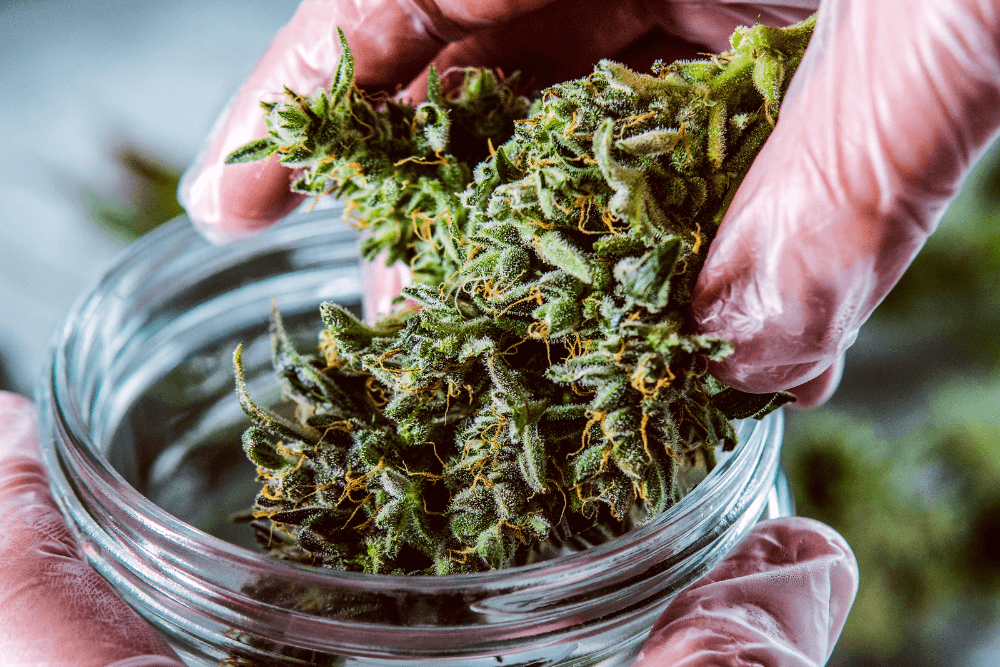For decades, cannabis enthusiasts and scientists alike have been intrigued by the distinctive scents emitted by various cannabis cultivars. Particularly, the question that has persisted among many is: which compounds are responsible for the potent gassy and skunky scents so often associated with cannabis?
Abstrax Tech, a frontrunner in cannabis research, has recently made headway in answering this question. Their innovative research, encompassing advanced techniques and collaborative efforts, has brought forward the discovery of an entirely new class of aromatics, Cannasulfur Compounds (CSCs). These compounds, as discussed in Abstrax Tech’s white paper, “The Science of Dank” are the key to understanding the much-debated gassy aroma of cannabis.
The Path to Discovery
To delve deep into the scent mysteries, Abstrax Tech combined advanced Gas Chromatography (GC x GC) with various detectors, allowing for a nuanced detection of compounds. Their collaboration with acclaimed cannabis growers, like Mario Guzman of Sherbinskis and Josh Del Rosso (the original breeder of OG Kush), equipped them with diverse cannabis samples to analyze.
The analytical journey led the Abstrax team to an exciting hypothesis. What if the gassy scent in cannabis is sulfur-based? The team noticed the common occurrence of sulfur compounds in other potently aromatic foods, such as durian and garlic. Validating this hunch, they detected significant correlations between the presence of sulfur compounds and the skunky scent across various cultivars.
Among the discovered compounds, one was identified as 3-methyl-2-butene-thiol or “prenyl thiol”, with others also containing the same functional group, the “prenyl” group. Subsequent chemical synthesis and testing confirmed their role in producing the characteristic scent of cannabis.
The Significance of Timing in Cannabis Growth
But it’s not just about identifying the compounds. Abstrax Tech further explored when these aromatic CSCs are produced during cannabis growth. Their findings were eye-opening. The CSC concentrations skyrocket towards the end of the growth cycle and peak during the curing process, only to decrease rapidly post-harvest. This discovery holds immense value for growers, emphasizing the criticality of timing and packaging to retain the prized scent for consumers.
Cannasulfur Compounds in Cannabis Extracts
Cannabis extracts, popularly consumed in various forms, also raised the question: Do these volatile CSCs survive the extraction process? The answer, as per experiments, is a resounding yes, but with a caveat. The extraction process has to be meticulously executed. Techniques involving cryogenic extraction and minimal heat post-processing proved successful in preserving these aromatic compounds. Meaning that, just like terpenes, heat and oxygen will cause degradation.
Benefits for Cannabis Vape Manufacturers:
For cannabis vape manufacturers, CSCs represent a monumental advancement in the quest for genuine cannabis experiences:
- Authentic Flavor Profiles: CSCs can be integrated into vape cartridges, recreating the unique aromatic and flavor profile of cannabis but in a botanical (and legal) format.
- Product Differentiation: Emphasizing the presence of these natural compounds can distinguish a brand in a crowded market.
- Precise Flavor Replication: With CSCs, manufacturers can precisely replicate specific strain aromas.
- Enhanced User Experience: Experienced consumers will get a more accurate cannabis flavor and aroma experience.
- Consistency from Batch to Batch: Using CSCs ensures every user gets a similar authentic experience, batch after batch.
Conclusion
Abstrax Tech’s groundbreaking discovery of Cannasulfur Compounds in cannabis is a testament to the endless surprises the plant holds. While the quest to identify the compounds behind the iconic gassy aroma has found its answer, it’s clear that this is just the tip of the iceberg for cannabis research. With each revelation, cannabis continues to unveil its vast potential, promising a future of exciting research and discoveries.



Follow NCIA
Newsletter
Facebook
Twitter
LinkedIn
Instagram
–